ADHD & Attention Deficits, Autism, Help for School and Kindy, Sensory Processing
5 Ways to Improve Sensory Functioning in the Classroom
How much easier could our teachers’ lives be if behavior in the classroom were not an issue? So, here are 5 proven strategies for teachers to increase students’ attention span and improve behaviour in the classroom.
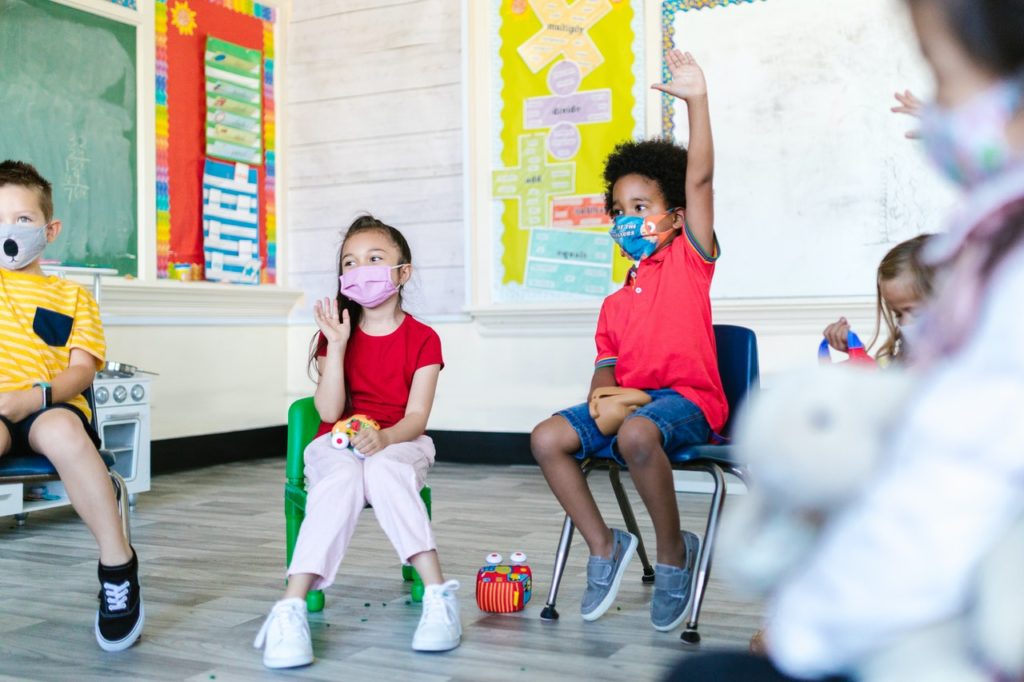
To our dear teachers of elementary schools…
Before another word is said to offer you solace or guidance, first let me say this. Bless you. There’s a special place in heaven for people with the patience, courage, and conviction to wrangle a classroom of children.
The heroes of a society that has us begging for ways to increase our students’ attention span. The heroes whose mask is often guised as a furrowed brow.
Whose cape must deflect bad attitudes, attacks of social anxiety, and meltdowns hiding a myriad of internal conflicts.
I’m happy to learn that according to the (American) National Center for Education Statistics, teachers are significantly happier today in their profession than the retention rates suggested years ago.
(One statistic floating around reported that 40-50% of teachers quit within 5 years. But a recent study cleared the air. In reality, only 17% of teachers are no longer in the field after 5 years.)
I’m happy to learn that even though the top 5 complaints from teachers are the same 5 complaints as they’ve been for decades, there are a LOT of strategies that are starting to work toward happier classrooms.
So, what are those strategies?
Improve Behavior in the Classroom by Improving Student Attention Span
1. Break the lesson blocks into even smaller blocks of time geared toward the average attention span of your age group.
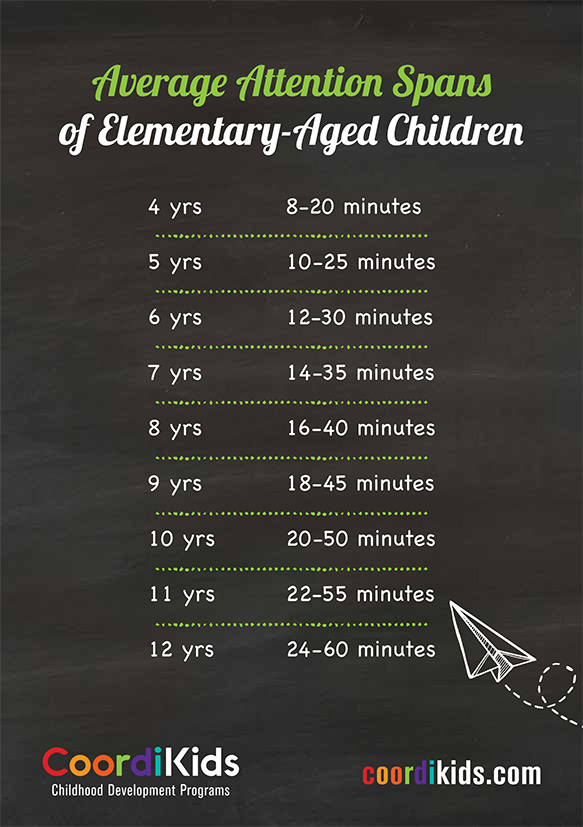
A 2016 study entitled “Off-task behavior in elementary school children” gave early childhood educators major insight into classroom behavior trends.
The study revealed that the attention span of students dropped off exponentially as any classroom activity carried on past 10 minutes.
10 minutes?!
How is a teacher supposed to accomplish any learning in 10 minutes at a time? Won’t switching from task to task every 10 minutes actually go against the teacher’s aim to increase a student’s attention span?
Not exactly.
This bring us to strategy #2 to increase students’ attention span:
2. Rotate through a variety of multi-sensory mini-lessons or learning stations within a lesson block.
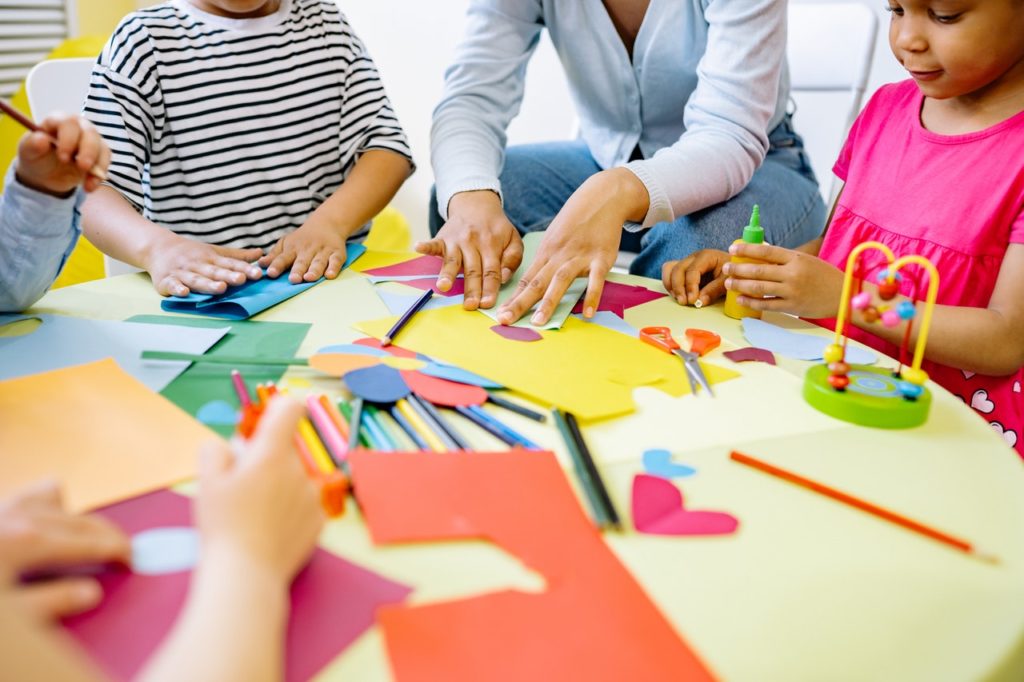
If you have one hour dedicated to a math lesson block, break it into 3 x 20-minute segments. Then in each segment, try utilizing a different type of learning style. In this way, you’re utilizing Strategy #1 without bouncing from subject to subject.
For example: Use hands-on visuals and tactile engagement by counting beads or blocks. Also, incorporate audio learning by tapping out numbers on the desk together.
Or, incorporate audio learning using music to count and clap patterns of 8. Another idea is to use hopscotch to incorporate movement into number activities.
Teacher Emily says:
“My preferred style of learning for children under the age of seven is learning through experience. We have learning stations with specific goals set up around the classroom. Children have to complete each goal with minor assistance from the teachers. The goals are themed depending on what is being taught that week, and they address different areas of instruction.
For example, when learning to write the letter A, instead of just diving in and tracing the letter, you might have a station where children have to use only their index finger to trace the letter in a box of flour or sand. This addresses sensory needs while also working on fine motor and literature skills.”
Teacher Denise is another champion for learning stations.
“Using stations really helps with their short attention spans because they get to move to the station and complete the work with their group members, and it’s usually not for more than 15 minutes.”
Improve Behavior in the Classroom With Movement Breaks
3. Take 5-Minute Movement or a Brain Break.
5 minutes of movement between lessons can make a huge impact in your student’s attention and behaviour in the classroom. These movement breaks are intended to be an actual 5-minute break from learning, not movement-incorporated-learning as suggested in the multi-sensory learning in Strategy #2.
As with the example of learning to write the letter ‘A’, you can ask the students to WALK on a big letter ‘A’ drawn on the floor. This will provide a movement opportunity, which can also increase the child’s sense of the direction of the lines in the letter.
Research shows that movement breaks make learning more efficient. Taking 5 minutes to let latent learning take effect allows your previous lesson to sink in and the following lesson to start fresh.
Movement breaks also allow students a chance to regulate or interrupt any anxiety, stress, or sensory overwhelm. (What kind of anxiety can a 5 year old really have?
We talk about common struggles of starting school here: “When You Have a Child Struggling in Kindergarten: 9 Common Struggles & Solutions”) Behavior in the classroom will be better when these kinds of challenges are minimal.
Physical activity also increases oxygen to the brain, which is critical for attention and learning.
Exciting Results of Research in Pediatric Occupational Therapy
Did you know that there are certain proven physical exercises to improve concentration for school children?
Research in occupational therapy and other disciplines has led to several programs of this kind that show teachers specific sets of exercises to improve concentration in the classroom. These programs are perfect for movement breaks.
For example, CoordiKids Classroom Course is a series of exercises designed by pediatric occupational therapists specifically to increase a student’s attention span in the classroom. The program is designed for teachers to utilize as movement breaks in the classroom.
The best part for teachers is that they can simply push play on the video without any additional prep or assistance. There are enough videos in the program to use a new one every week for the whole school year – or mix them up each day.
Learn more about the Preschool Course.
What Incorporating Strategies #1-3 Might Actually Look Like in a Sample Schedule
We polled a few kindy and 1st year teachers to find out how we could create a sample schedule that might incorporate the three strategies we’ve talked about so far:
1. Breaking lesson plans into short blocks of 10-20 min
2. Rotating multi-sensory activities into each lesson plan
3. Incorporating movement breaks
We know every school system has its own schedule requirements, so it may take some creativity on your part to work with the administration to come up with one that fits your district’s requirements, but perhaps this will help:
Sample Kindergarten Schedule With Multi-Sensory Rotation Blocks & Movement Breaks
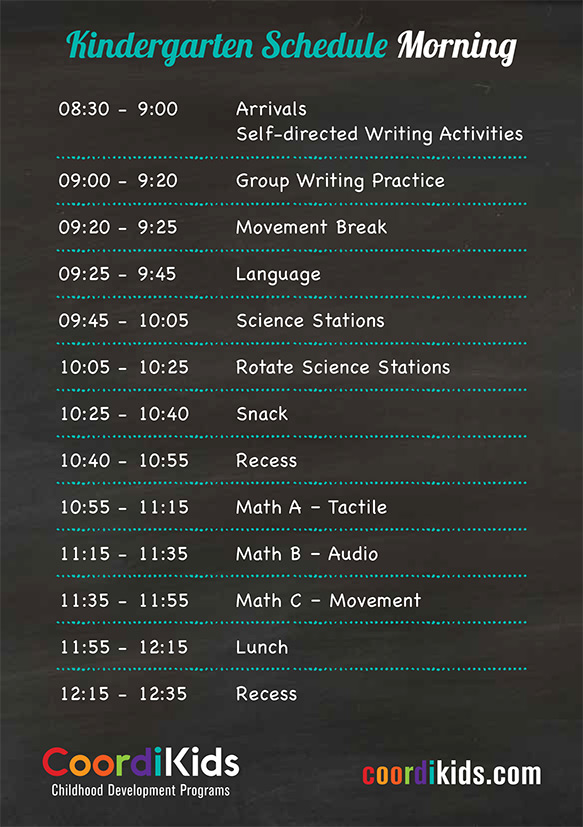
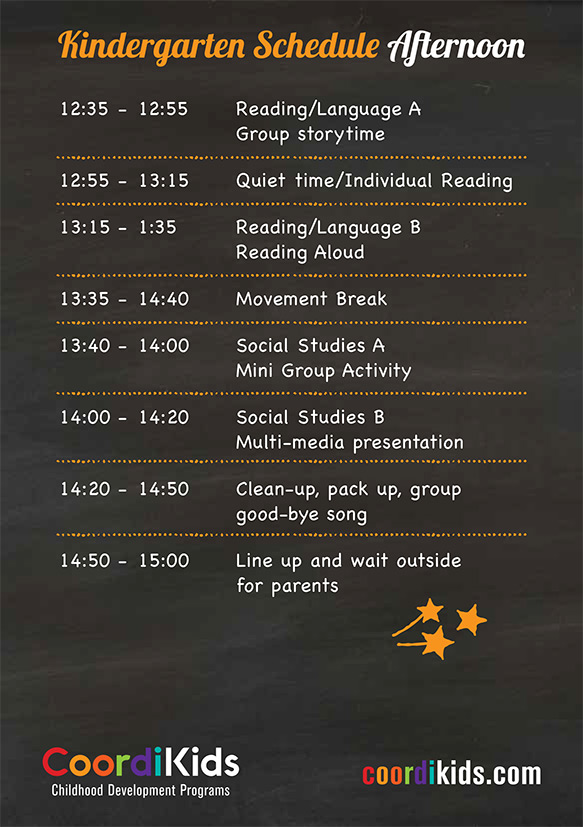
Improve Behavior in the Classroom With Rewards & Achievements
It’s no secret these days that positive reinforcement in the classroom is the preferred approach. Positive reinforcement is a better motivator for good behavior than detention and suspension.
Rewards systems and celebrating individual student achievements are the two most-cited strategies that work to improve behaviour in the classroom.
4. Start a Reward System.
If you’re a teacher, surely by now Pinterest is your best digital friend. Teachers and parents are becoming SO clever and creative with rewards systems in the classroom. Consequently, Pinterest has become a hub of inspiration.
One teacher recommends having rewards for both good behaviour in the classroom and academic achievements.
She discovered that having different reward categories helped the children who tended to slip-up in one area regularly still have goals to work toward that were achievable.
5. Routinely Highlight Individual and Group Achievements.
Making sure to shower attention, affection, and excitement for achievements is also an important addition to the rewards systems.
There is a report published entitled “Using Positive Student Engagement to Increase Student Achievement”.
And it suggests that teachers who create a classroom culture of achievement, creates a classroom of more engaged students.
And this strategy is not about giving out participation ribbons. Rather, this is about setting concrete goals with individual students.
Furthermore, it’s about being honest about each child’s strengths and weaknesses and helping them see ways to celebrate their strengths and improve their weaknesses.
Teachers find that it significantly helps overall behavior in the classroom when they give attention to individuals. In addition, if they allow enough time for the individuals to ask questions about themselves and how they could specifically do better to earn more rewards, they get greater participation.
So, rather than making general statements to the group as a whole about doing “better”, they find individual attention works better. So, setting specific expectations and goals for each individual is more effective to improve behaviour in the classroom.
How to Increase Students’ Attention Span & Improve Behavior in the Classroom: 5 Proven Strategies for Teachers
In quick summary, here were the five strategies for increasing primary school students’ attention span and improving their behavior in the classroom. We hope this list will be useful for teachers!
The information was gleaned from polls and conversations with experienced teachers, as well as published scientific research.
1. Break lesson blocks into short 10-20 minute mini-lessons or activities based on the average attention span for the age of your students.
2. Rotate through different multi-sensory learning experiences.
3. Incorporate regular 5 minute movement breaks throughout the day. (We suggested CoordiKid’s Preschool Course for younger students or the Classroom Course for older students.)
4. Use a rewards system that compliments both academic and behavioral achievements.
5. Set personalized expectations, and routinely highlight individual and group achievements.
Thank you to the kind collaboration from the teachers who offered their feedback for this article!
References:
American National Center for Education Statistics (https://nces.ed.gov/)
“Off-task behavior in elementary school children” Karrie E Godwin, Ma V. Almeda, Howard Seltman, Shimin Kai, Mandi D Skerbetz, Ryan S Baker, Anna V Fisher. ELSEVIER, August 2016.
“Using Positive Student Engagement to Increase Student Achievement” The Center for Comprehensive School Reform and Improvement, April 2007.